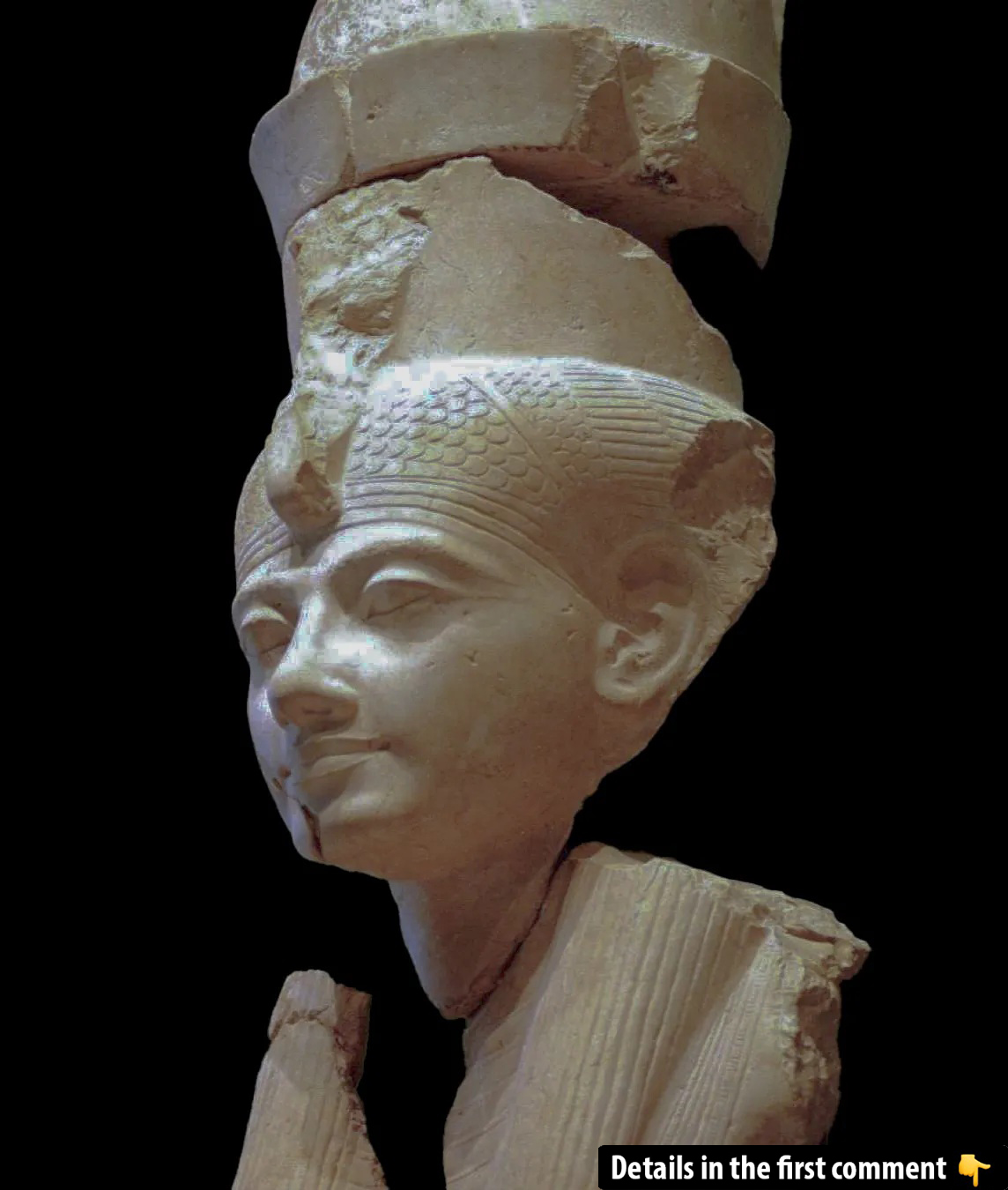Mut, whose name means “mother” in Ancient Egyptian, was one of the most significant deities in the Egyptian pantheon. Revered as the mother goddess and queen of the gods, her worship represented the core of Egyptian beliefs about creation, protection, and cosmic order. Her presence in Egyptian culture, especially in the city of Thebes and the grand Karnak Temple, offers us an invaluable glimpse into the reverence ancient Egyptians had for motherhood, fertility, and divine kingship. This article delves into Mut’s essential role in the ancient Egyptian religious and social spheres, exploring her depictions, worship practices, connections to the pharaohs, and lasting legacy.
Introduction to Goddess Mut: The Mother of the Gods
Mut was considered a primal deity, deeply tied to the primordial waters of Nu, from which creation itself emerged. As a creator goddess, her role extended far beyond just maternal love—she was seen as the originator of life, providing protection and nurturing to both the gods and humankind. Her name, meaning “mother,” reflected her dominion over life and the natural world, embodying the very essence of creation.
While many Egyptian deities were linked to specific aspects of nature or society, Mut was unique in her all-encompassing ability to offer both protection and creation. She symbolized life’s continuity and divine order, serving as the epitome of motherhood and guardianship in Egyptian culture.
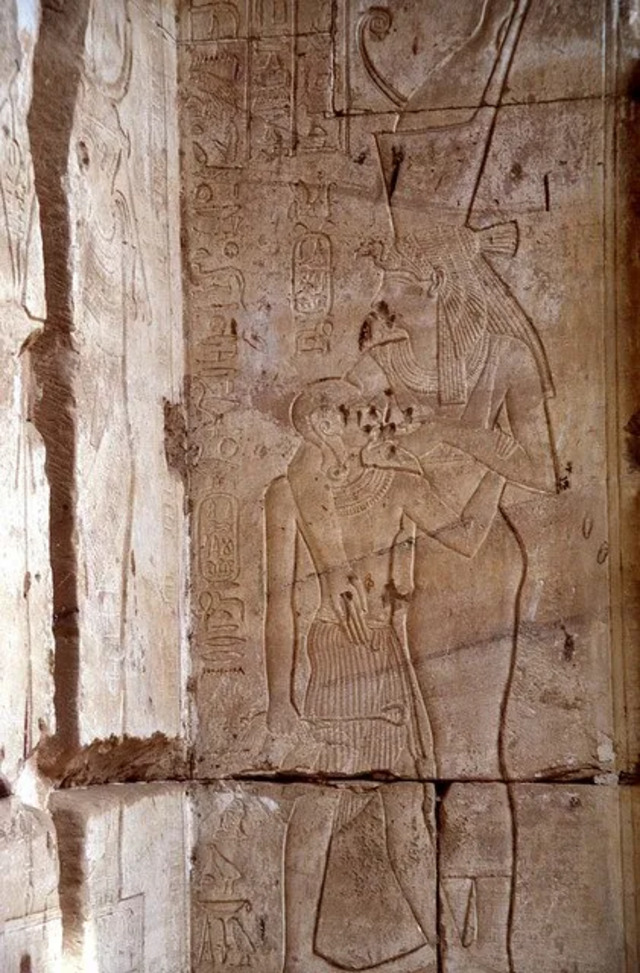
Video
Check out this video to learn about every Egyptian god, offering an in-depth explanation of their roles, stories, and significance in ancient Egyptian culture.
Mut’s Depictions in Art and Iconography
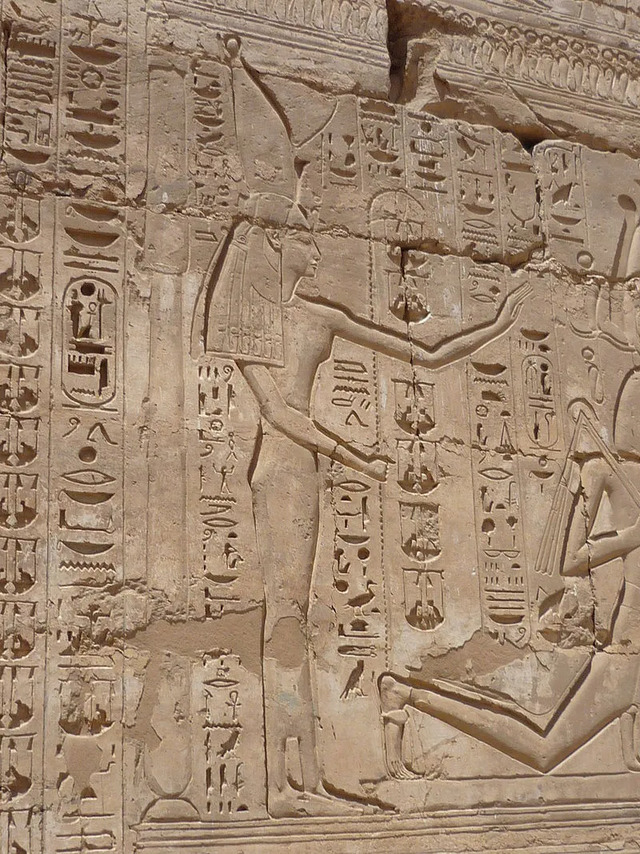
In artistic representations, Mut was often depicted in several forms, signifying her multifaceted role in the divine hierarchy. One of the most recognizable symbols of Mut is the vulture, an animal often associated with motherhood and protection. The vulture’s nurturing nature, especially in its role of caring for its young, made it a fitting emblem for a goddess who safeguarded the welfare of her children and followers.
In addition to this, Mut was often depicted wearing the double crown of Upper and Lower Egypt, reinforcing her rule over all the lands of Egypt. Sometimes, she was shown with the attributes of other important goddesses such as the lioness head of Sekhmet, the cat head of Bastet, or the cow head of Hathor, signifying her powerful, protective, and regal qualities.
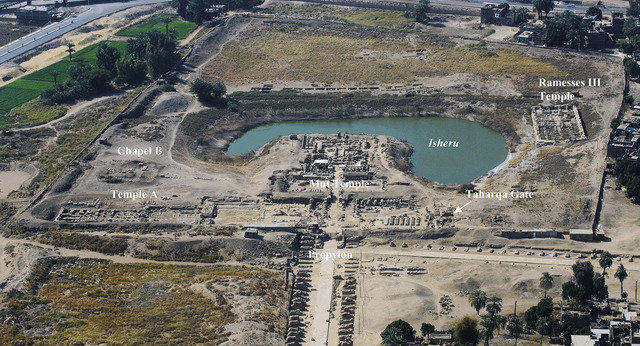
Mut’s Primary Worship and Temples
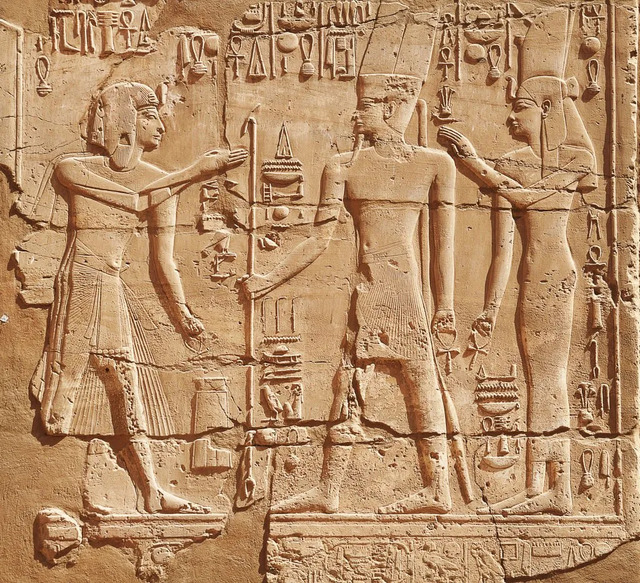
Mut’s principal cult center was located in the grand city of Thebes, where she was honored as part of the Theban Triad, alongside her consort Amun and their son Khonsu. Together, this divine family represented the strength and unity of Egypt’s divine order. The Karnak Temple complex housed her main temple, where daily rituals and ceremonies were performed in her honor. One of the most significant aspects of the temple was the sacred crescent-shaped lake, the Isheru, where her statue would be paraded during festivals. These rituals, led by the pharaoh and priestesses, underscored her role as the divine protector of kingship, fertility, and the legitimacy of the ruler’s power.
Mut’s Role in Theban Festivals
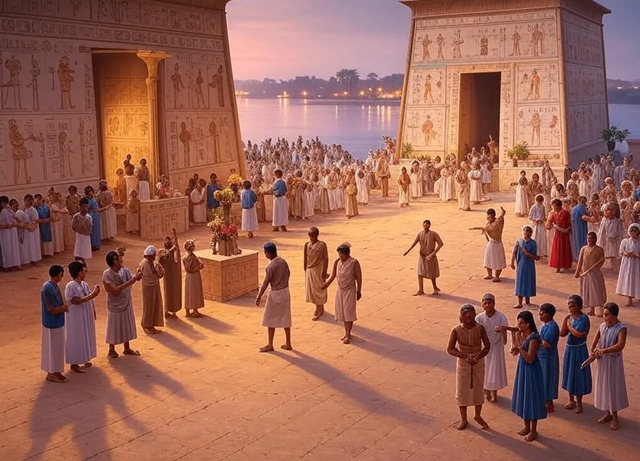
Mut played an integral role in some of the most important festivals of ancient Egypt, particularly those that celebrated the divine and royal relationships. The Opet Festival, one of the most significant events in Theban history, featured a ceremonial procession where statues of Amun, Mut, and Khonsu were transported from Karnak to Luxor Temple. This festival, lasting from 11 to 20 days, celebrated the spiritual renewal of the kingdom, affirming the pharaoh’s divine right to rule. The participation of Mut in this festival highlighted her central role as Amun’s divine consort and a protector of royal legitimacy.
Additionally, the Sokar Festival (or Khoiak Festival), although primarily associated with Osiris, also involved Mut due to her connection with fertility, resurrection, and rebirth. Her presence during these ceremonies, which focused on the themes of death and regeneration, reinforced her image as a nurturing force linked to the cyclical nature of life and death.
Mut’s Connection with the Pharaohs
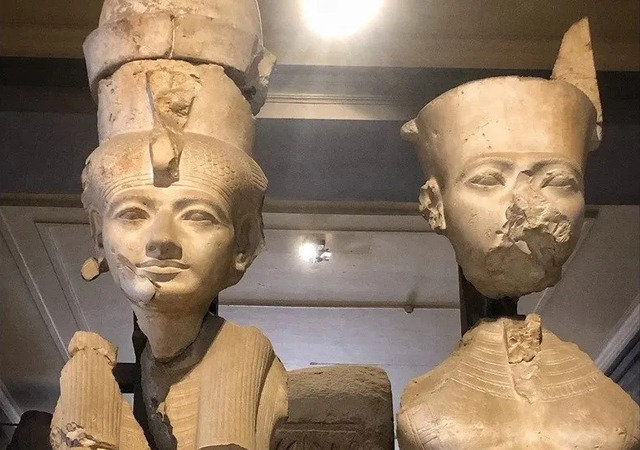
One of the defining features of Mut’s worship was her close relationship with the pharaohs, particularly in legitimizing their rule. As the divine mother, she was seen as the protector of the kings and the state. Pharaohs would invoke her name in various rites to affirm their divine right to rule.
Mut’s connection to the pharaohs was not just ceremonial but also symbolic of the nurturing role she played in maintaining cosmic and earthly order. Her role in the Theban Triad, particularly as the consort of Amun, emphasized the strength and stability of the royal line and the pharaoh’s role as the divine intermediary between gods and men.
Mut’s Cosmic Importance and Role in Creation
Beyond her maternal aspects, Mut was also central to the Egyptian understanding of creation and cosmic order. Her ties to the primordial waters of Nu—believed to be the source of all creation—symbolized her role as the originator of life. In various myths, Mut is described as either giving birth to the world or being self-created, emphasizing her role as both a maternal and cosmic figure.
Furthermore, Mut’s association with Ra, the sun god, added another layer to her importance. She was considered both his mother and daughter in different myths, further reinforcing her cosmic role and connection to the fundamental forces of the universe.

Mut’s Greek Counterpart: Hera
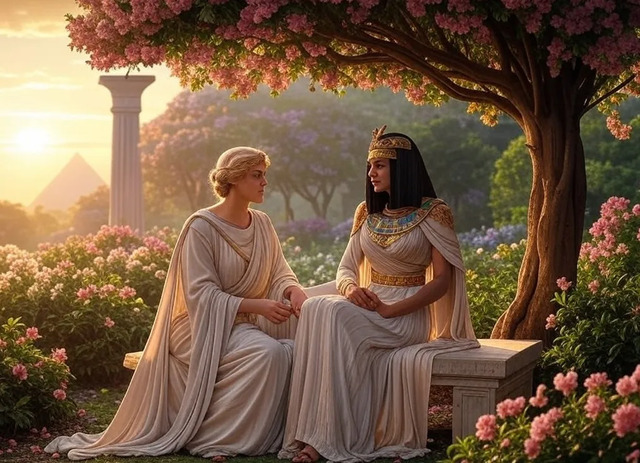
The parallels between Mut and the Greek goddess Hera are striking. Both goddesses are associated with motherhood, marriage, and the protection of women and family. In Greek mythology, Hera was the queen of the gods and the protector of women and childbirth, much like Mut in Egyptian beliefs. Despite the similarities, however, it’s essential to recognize the unique cultural contexts in which these two deities operated.
While Mut’s worship was deeply embedded in the Egyptian understanding of cosmic order, creation, and kingship, Hera’s role in Greek mythology had a more direct connection to marriage and the protection of women.
Mut’s Influence in Later Periods and Legacy
While Mut’s primary worship flourished during the New Kingdom, her influence persisted through the Ptolemaic and Roman periods. Even as Egypt underwent cultural changes, her symbolism as a maternal and regal figure continued to resonate with the population.
The worship of Mut also endured as her temple precincts were renovated and maintained throughout these periods, ensuring that her legacy as a powerful and nurturing goddess was preserved. The continued reverence for Mut underscores her deep cultural significance, and her role in Egyptian religion has continued to captivate scholars and enthusiasts of Egyptian mythology and history.
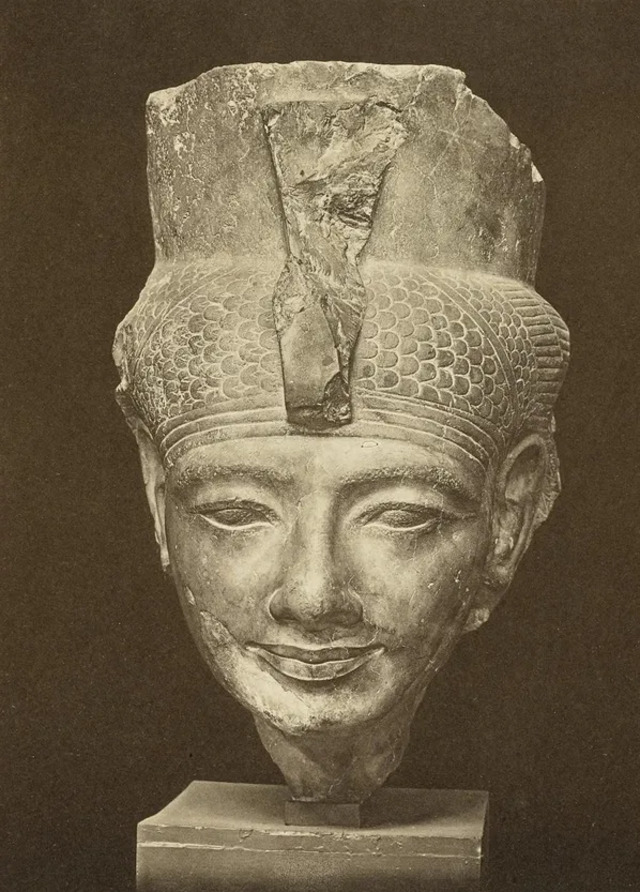
Video
Watch this video to explore the Eye of Ra, the greatest destructive power in Egyptian mythology, and uncover its role in ancient stories and beliefs.
Conclusion: Mut’s Enduring Legacy
Mut’s enduring legacy in ancient Egyptian religion reflects the society’s deep reverence for motherhood, protection, and cosmic order. As the divine mother, she was central to the cultural and religious identity of ancient Egypt, playing a crucial role in the maintenance of both divine and earthly order.
Through her worship, festivals, and association with the pharaohs, Mut exemplified the sacred balance between creation, nurturing, and kingship. Her influence extended well beyond the confines of the New Kingdom, and her legacy as one of Egypt’s most important deities continues to inform our understanding of ancient Egyptian spirituality.
